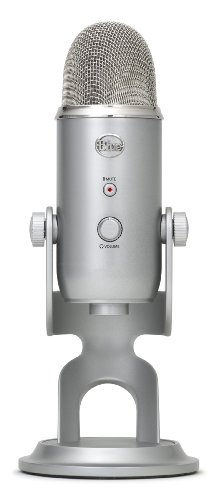These days, written text doesn't quite cut it. You'd better have a stable of multimedia tools on hand to engage your prospects on all levels. That means having videos and audio podcasts on your sites as much as you have articles and images.
The best part is that, in today's tech-friendly world, you don't need to have an advanced degree in AV technology to put together quality audio on your computer. In fact, you can get it all done for less than 0 and no one would know the difference between your audio and pro recordings.
Recording Your Audio
Here is a list of what you'll need to buy and do to get your audio recorded properly.
* Microphone - A microphone is step one for audio recording. Most computers come with something these days, but try and record a podcast on your laptop's in-dash mic and you'll quickly find it doesn't get the job done.
I'm partial to headset microphones because they're more comfortable and make it easy to do other things while recording. Good brands include Plantronics and Blue Snowball. The former costs less than and the later less than0 and you'll get the option between desk and headset mics.
* Regarding Ambient Noise - When getting started, one of the mics above might be okay for a while, but eventually you need to address the issue of ambient noise. Even the best microphones on the planet, when you plug them into a PC will have unwanted ambient noise.
The solution to this problem is to purchase a DigiDesign MBox or a Technical Pro Podcast System. The former is a bit pricey, but you can find the latter for 0 (or less, when on sale). These standalone systems reduce feedback and ambient noise almost entirely.
* Quieten Down the Room - Next, you need to remove any unwanted elements from the room. If you don't want your dog or roommate showing up on your podcast, or for your listeners to hear the latest episode of "How I Met Your Mother", you'll need quiet and controlled space.
Turn off any fans, unplug any machines, mute your phone, and pull the microphone away from the computer to remove ambient noise that can disrupt your message. Another good thing to do is dampen the sound going into your computer.
* Software - There are a lot of software options out there for recording sound and cutting it into your podcasts. Unfortunately, some of them can get a little pricey. Adobe Audition is the top option for many creative pros, but it costs more than 0.
The same is true for super high quality Pro Tools software. So, instead of spending a huge pile of money, I stick with simple, relatively basic software tools like Audacity. Audacity is about as simple as you get, but it's also free and works on all three major Operating Systems.
There are other paid options like Sound Forge and Cake Walk that are relatively affordable, but they are only necessary if you want the extra tools that come with a premium piece of software.
For the most part, when recording your audio, the most important thing is to have clear, crisp sound that isn't interrupted by ambient noise or your family in the background. You also need a solid computer that can render that sound and output high quality streaming audio files.
If you don't have the necessary hard drive space for storing recorded audio, you may also need to buy an expanded external hard drive. You can get up to a Terrabyte of space for less than 0.
When it comes time to record your audio, remember to be yourself and let the content of your message do most of the work. Fancy effects are nice, but people are really interested in hearing what you have to say.
 | Price : Too low to display
| Price : Too low to display
 | Price : Too low to display
| Price : Too low to display









